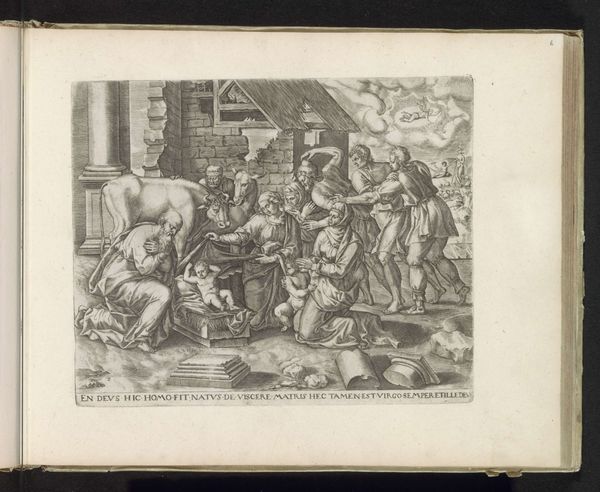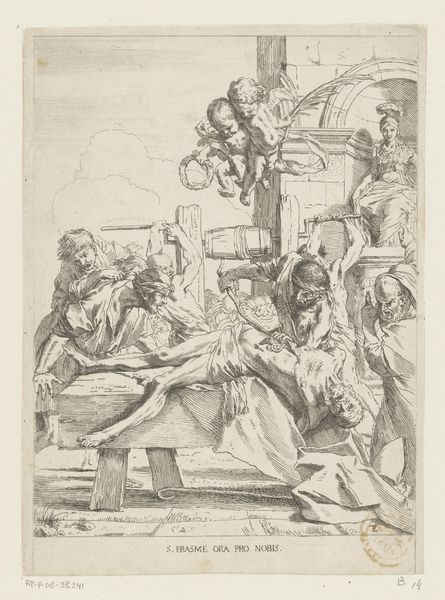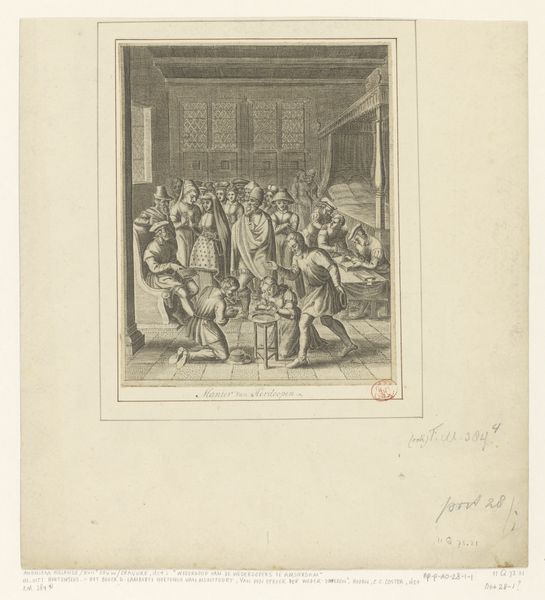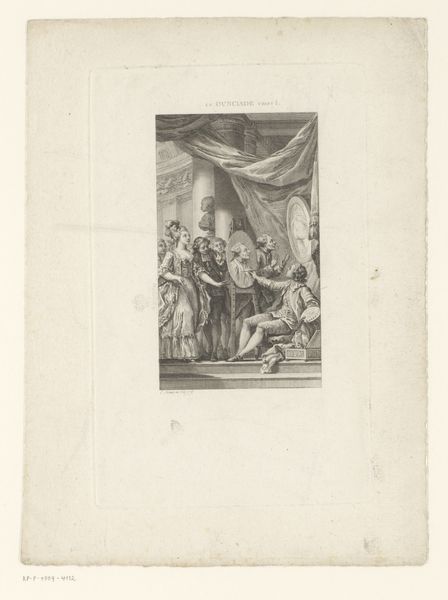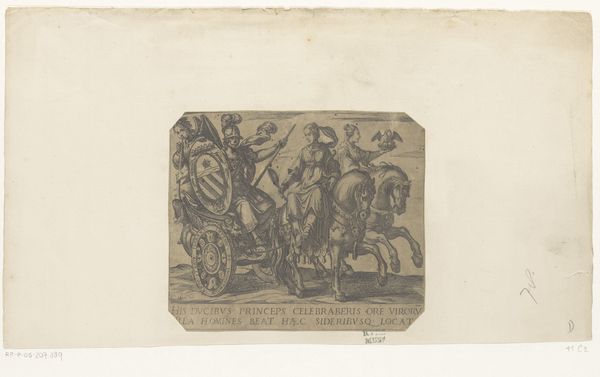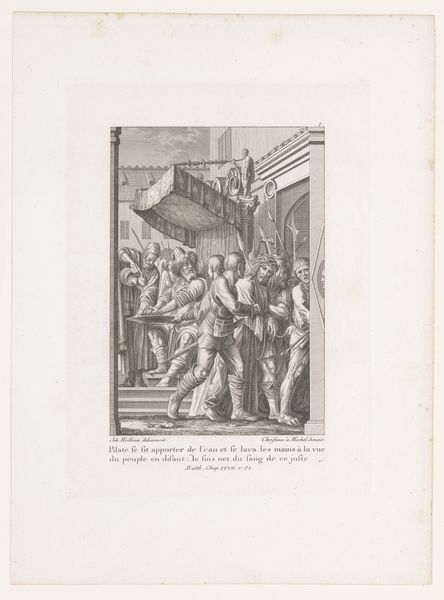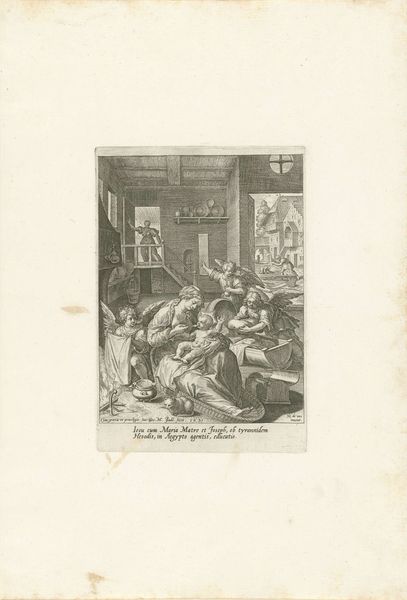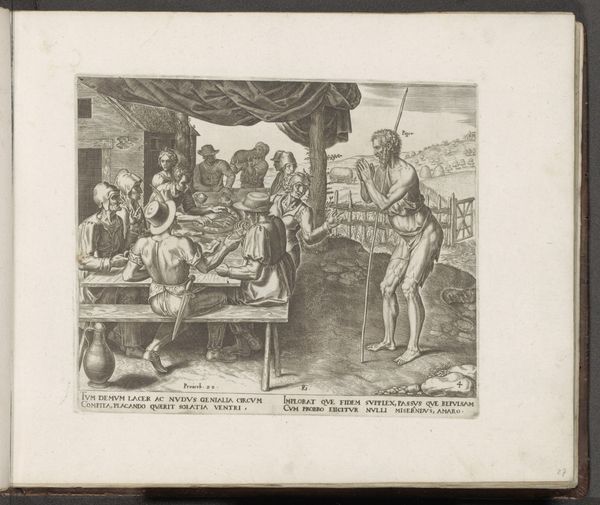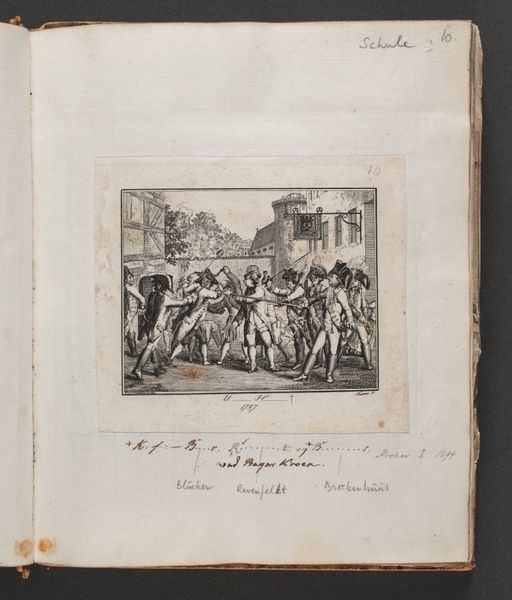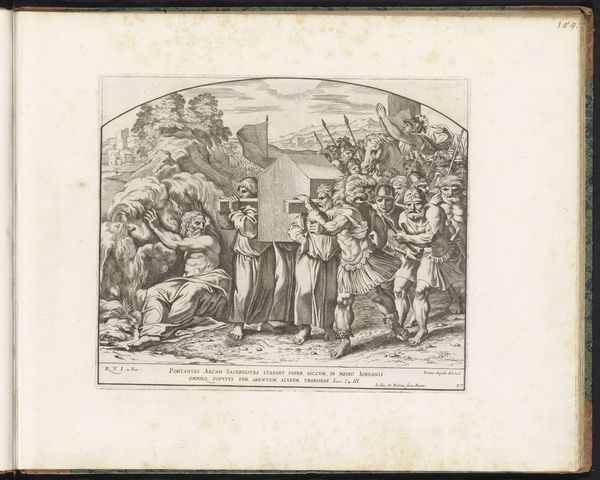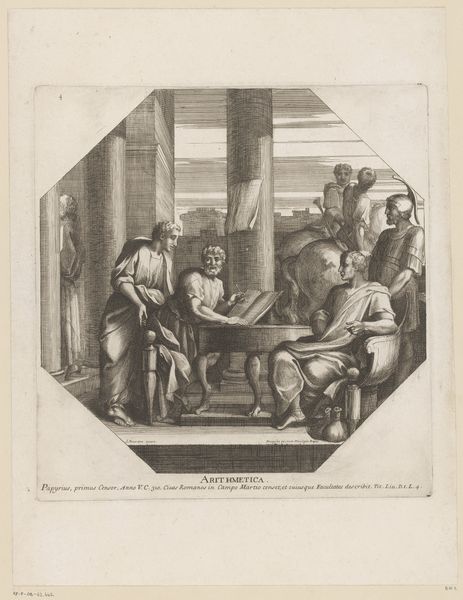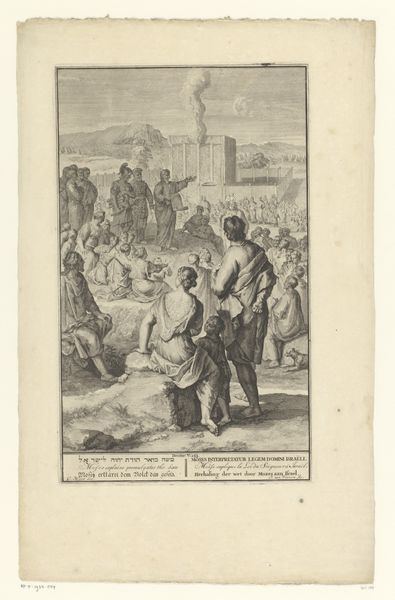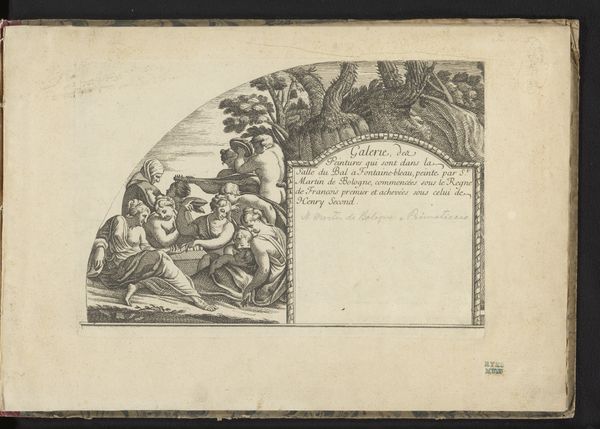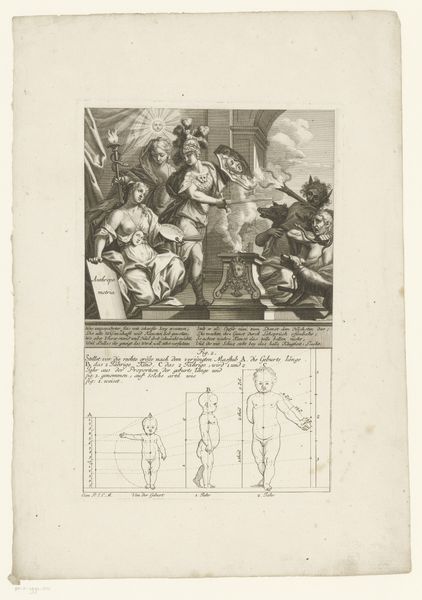
print, engraving
#
narrative-art
#
baroque
# print
#
old engraving style
#
figuration
#
history-painting
#
engraving
Dimensions: height 365 mm, width 315 mm
Copyright: Rijks Museum: Open Domain
This anonymous etching, "De Dapperheid van ingewanden ontdaan voor de Vrede," was made in 1713 in the Netherlands. It depicts the gruesome scene of a man being disemboweled. Above, cherubs offer a laurel wreath to a seated female figure who represents peace and prosperity. The image seems to critique the social and political structures of its time. Created during the reign of Louis XIV, it likely reflects on the heavy price paid for the peace brought about by the Treaty of Utrecht. The act of disembowelment, a brutal and public act, could symbolize the sacrifices, both literal and figurative, demanded by those in power. This print uses the visual language of torture to comment on contemporary European politics. To fully understand its meaning, one would want to consult historical archives, political pamphlets, and perhaps even literature of the period, so the meaning of art can be more fully understood through its social and institutional context.
Comments
No comments
Be the first to comment and join the conversation on the ultimate creative platform.
